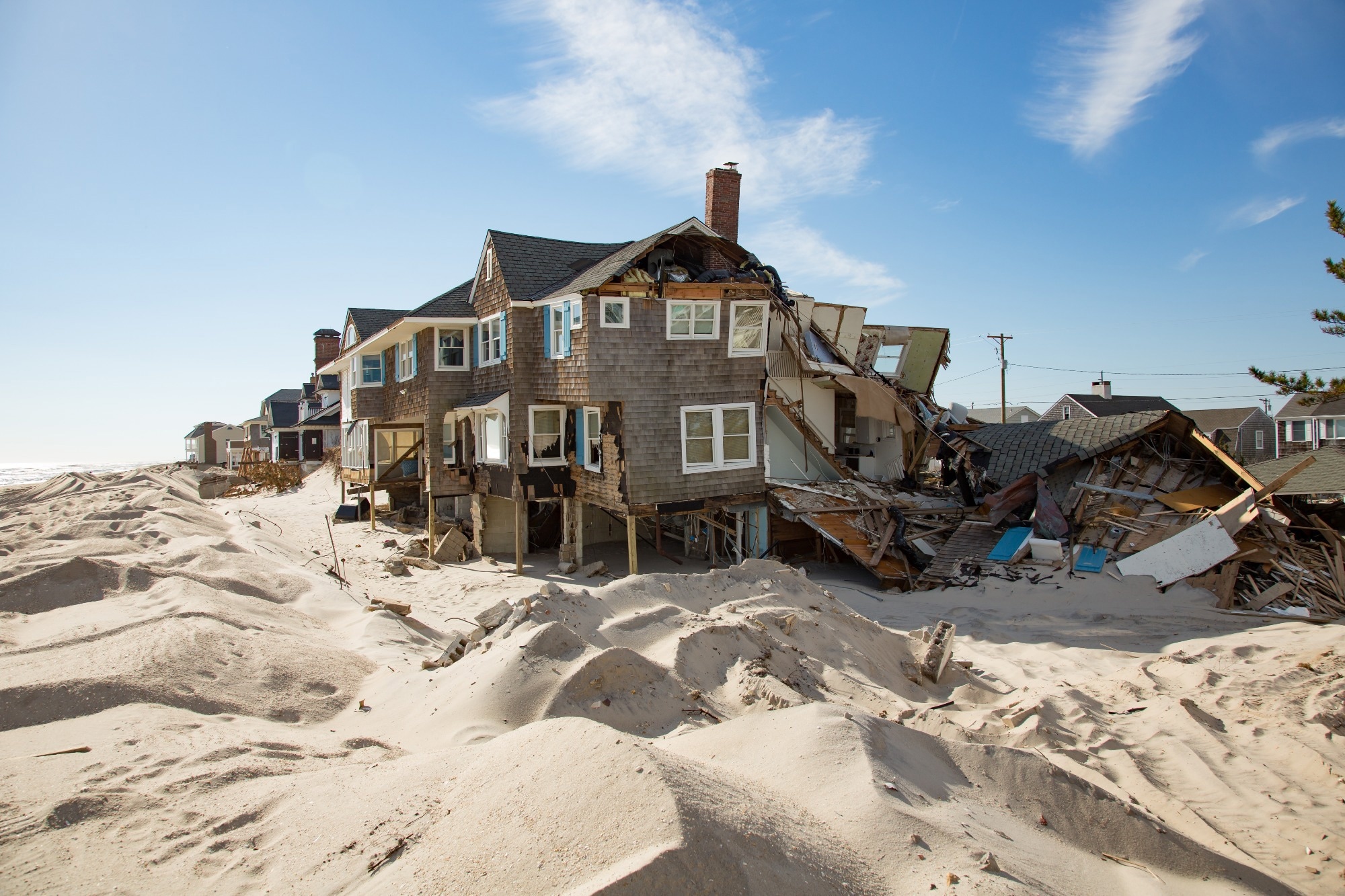New research shows that hurricane-related flooding does not just cause short-term damage; it can raise cardiovascular risks for older adults years after the storm has passed.

Study: Hurricane Exposure and Risk of Long-Term Cardiovascular Disease Outcomes. Image Credit: Bob Pool / Shutterstock
In a recent JAMA Network Open article, researchers examined whether hurricane-related flooding, specifically from Hurricane Sandy, increased the risk of long-term CVD. They found that people in flood-exposed areas were more likely to experience CVD than those in non-flooded areas over five years (adjusted RR 1.05; 95% bCrI 1.01–1.08), with the strongest effect seen for heart failure in New Jersey approximately three years after landfall (RR 1.10; 95% bCrI 1.03–1.18 for ≥50 beneficiaries), and event-study elevations at 4–5 years across regions.
Background
Climate change has intensified hurricanes and severe storms, making them more destructive and frequent. These events cause widespread disruption and health issues, especially in the weeks and months after landfall.
Previous research shows that hurricanes are linked to increased CVD events, such as heart failure, myocardial infarction, and stroke, with older adults being particularly vulnerable to hospitalizations and exacerbations of chronic illnesses.
Impacts have also been noted in populations with conditions like diabetes and hypertension, as well as among racial and ethnic minority groups who already face elevated CVD risks.
Although short-term health effects are well-documented, little is known about whether these risks persist in the long term. This is concerning, given demographic trends toward aging populations and the tendency of older adults to remain in their communities despite the risks associated with disasters.
Hurricane-related disruptions, including displacement, gentrification, socioeconomic change, and repeated or new exposures, may prolong health impacts. Disaster management strategies, however, mainly focus on short-term emergency response.
About the study
This cohort study analyzed Medicare fee-for-service beneficiaries aged 65 years or older who lived in New Jersey, New York City, and Connecticut between 2010 and 2017. Only individuals continuously enrolled in Medicare Parts A and B, residing in the same zip code tabulation area (ZCTA), were included.
A 20% national Medicare sample provided claims data. The analysis compared CVD event rates in ZCTAs that were flooded during Hurricane Sandy to those in nearby non-flooded ZCTAs within a 10-mile radius. Flood exposure was defined using U.S. Geological Survey high-water mark maps from October 2012.
The primary outcome was the rate of CVD events (namely stroke, myocardial infarction, and heart failure) per 1000 beneficiary-years, based on validated claims algorithms. Rates were aggregated at the ZCTA level and adjusted for time enrolled. Covariates included demographic characteristics, comorbidities, socioeconomic indicators, and an Area Deprivation Index.
Statistical analysis employed a spatiotemporal Bayesian difference-in-differences framework, incorporating conditional autoregressive random effects and temporal random walks to account for spatial and temporal clustering.
Propensity score matching balanced covariates between groups. Event study specifications further tested the timing of risk changes and the parallel trends assumption. Sensitivity analyses assessed robustness to different matching strategies, sample restrictions, and model specifications.
Key findings
The study examined 121,599 Medicare beneficiaries across 695 ZCTAs in Connecticut, New Jersey, and New York City. Of these, 444 ZCTAs (63.9%) experienced flooding from Hurricane Sandy. After matching, 121,395 beneficiaries across 690 ZCTAs (441 of which were flooded) were included in the analytic cohort.
Before matching, demographic characteristics such as age, sex, and overall CVD prevalence were similar between flooded and nonflooded ZCTAs.
However, socioeconomic differences were evident, with flooded areas having lower median incomes, a higher proportion of renter-occupied households, and higher deprivation scores. After matching, baseline differences in demographics and health conditions were minimized (standardized mean differences were small), though income and deprivation disparities persisted.
Across all regions, flooded ZCTAs showed a modest but statistically significant increase in CVD events over five years (RR 1.05; 95% bCrI 1.01–1.08), with results consistent in sensitivity analyses. Subtype analyses revealed that only heart failure rates were significantly higher in flooded areas (RR 1.03; 95% bCrI 1.00–1.08 overall; in New Jersey, ≥50 beneficiaries: RR 1.10; 95% bCrI 1.03–1.18), while myocardial infarction and stroke were not consistently associated with flooding.
Regional analyses highlighted New Jersey, where both overall CVD and heart failure events rose notably in flooded ZCTAs, whereas New York City and Connecticut showed no significant increases in the DID analysis. Event study analyses suggested short-term elevations within six months for CVD, heart failure, and myocardial infarction, additional MI increases about two and five years later, and no persistent stroke signal. Sensitivity checks confirmed the robustness of the model across different modeling strategies.
Conclusions
This study showed that Hurricane Sandy-related flooding was linked to elevated CVD risk among older Medicare beneficiaries, with effects lasting up to five years. Heart failure appeared to drive much of the increase, particularly in New Jersey, while myocardial infarction and stroke were less consistently affected.
Event study analyses suggested both short-term spikes in CVD, heart failure, and myocardial infarction within six months and later increases in heart failure four to five years post-landfall. These findings align with earlier research documenting short-term CVD risk after hurricanes, extending evidence to longer-term outcomes.
Methodologically, combining difference-in-differences and event study models strengthened the analysis by capturing both average post-hurricane effects and temporal patterns of risk.
However, limitations included focusing only on fee-for-service Medicare beneficiaries who remained in the same area, excluding Medicare Advantage and institutionalized populations, and relying on zip-code-level rather than individual-level data.
Overall, the study highlights the long-term cardiovascular impacts of hurricane-related flooding and emphasizes the need for disaster management frameworks to account not only for immediate care but also for sustained cardiovascular risks and healthcare demands.
Journal reference:
- Hurricane Exposure and Risk of Long-Term Cardiovascular Disease Outcomes. Ghosh, A.K., Soroka, O., Safford, M., Shapiro, M.F., Wang, F., Johnson, G.D., Civelek, Y., DiMaggio, C., Abramson, D. JAMA Network Open (2025). DOI: 10.1001/jamanetworkopen.2025.30335, https://jamanetwork.com/journals/jamanetworkopen/fullarticle/2838441